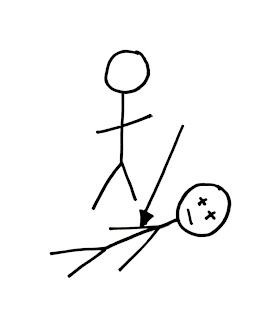Whenever I think of asking others for assistance, I picture my ancient languages professor demonstrating the Greek art of supplication. He was almost as old as languages he taught, so the process always made us students nervous.
He always did make it back up -- eventually -- after he explained the rest of the process. The one asking for help (known by the fancy-shmancy term "suppliant") grasped the knees of the other person and then made a request. This could be either awesome or awkward for those involved.
Sometimes the request was successful
... and sometimes not.
I wouldn't recommend trying the knee-clasp in this day and age (be sure to let me know how it goes if you make the attempt, though), but I can give some advice for the modern era, particularly regarding what techniques to avoid. Stay away from the following:
1. Downplaying the other person's busyness.
Bad:
Better:
2. Insinuating that this is a favor to them.
Bad:
Better:
3. Not actually asking
Bad:
Better:
4. Phrasing an order as a question
Bad:
Better:
I'm sure that I have missed some other standard annoyances, so list your pet peeves about help requests in the comments below! <-- Shameless plug; it's been nearly a year since the last comment on this blog.













